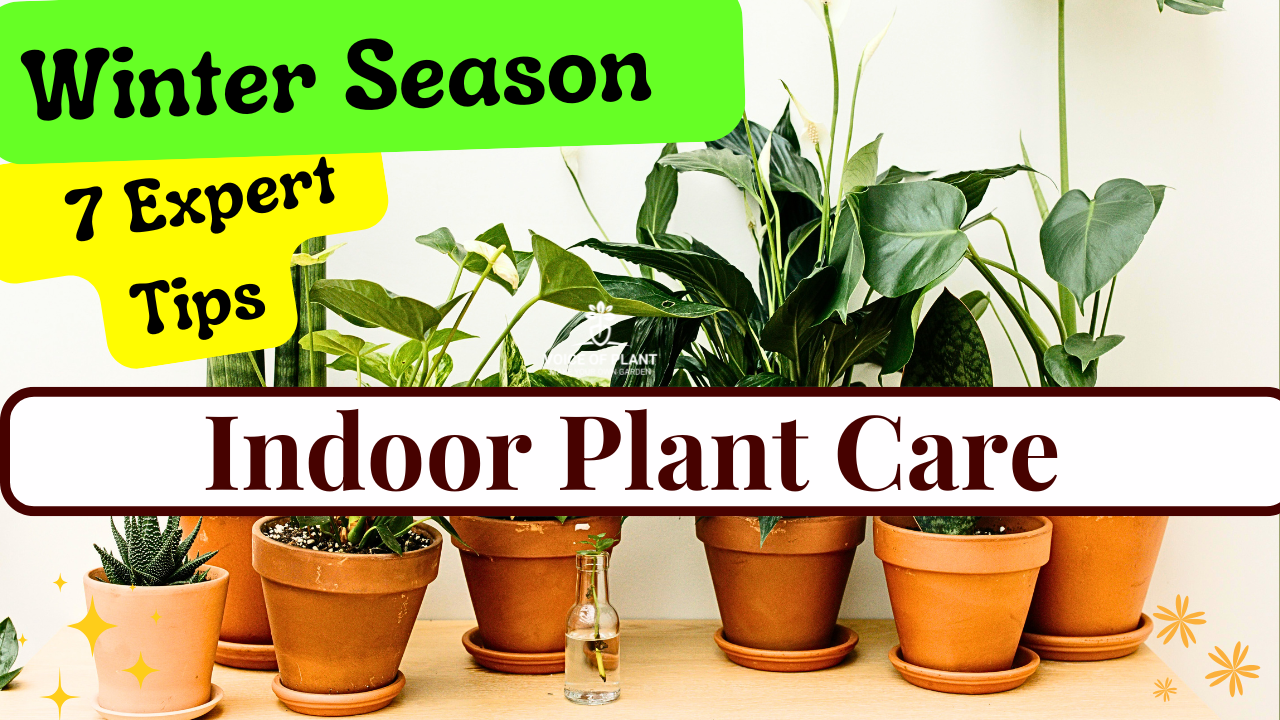How to Care Indoor Plants in the Winter Season
Winter has arrived, and it is time to give your indoor plants some extra attention. During this season, most plants enter a dormancy phase, meaning their growth slows down, and they may appear less vibrant.
As the days grow shorter and temperatures drop, your plants face new challenges like reduced light, lower humidity, and fluctuating indoor temperatures. With a little effort and the right approach, you can help your plants overcome these seasonal hurdles and stay lush and green all winter long.
Understanding the Challenges of Winter for Indoor Plants
Winter introduces unique challenges that require extra attention. Indoor plants are affected by several factors:
1. Decreased Light Availability:
Shorter daylight hours mean your plants may not receive enough sunlight for photosynthesis.
2. Fluctuating Indoor Temperatures:
Cold drafts or the heat from radiators can stress plants, leading to wilting or yellowing leaves.
3. Reduced Humidity Levels:
Indoor heating systems strip moisture from the air, causing leaves to dry out.
4. Winter Stress Signs:
Keep an eye out for symptoms like drooping, leaf yellowing, or slow growth, as these indicate your plant is struggling.
Addressing these issues proactively ensures your plants remain healthy throughout the season.
1. Adjusting Lighting for Indoor Plants in Winter
Natural Light Adjustments
During winter, maximizing natural light is crucial.
- Position your plants near south- or west-facing windows where they can receive the most sunlight.
- Clean the windows regularly to let in more light, and avoid obstructing the path of sunlight with curtains or blinds.
Artificial Light Options
If natural light is insufficient, consider using LED grow lights. These lights mimic sunlight and promote photosynthesis.
- Place the grow light a few inches above the plant canopy and follow the recommended duration for each plant type.
Rotating Plants for Balanced Growth
- Turn your plants every week to ensure even exposure to light, preventing uneven growth and leggy stems.
2. Regulating Temperature for Indoor Plants
Most indoor plants thrive between 18 to 25 degrees Celsius.
Avoiding Temperature Extremes
It is crucial to protect plants from harsh, cold waves to prevent their demise. Keep plants away from cold drafts near doors and windows.
- Similarly, avoid placing them too close to heat sources like radiators or fireplaces, as these can scorch the leaves.
3. Watering Indoor Plants During Winter
Plants grow more slowly in winter, meaning they require less water. Overwatering is one of the most common mistakes during this season.
Tips for Correct Watering for Indoor Plants
1. Check Soil Moisture:
- Always test the top inch of soil before watering.
- If it feels dry, your plant likely needs water.
2. Avoid Overwatering:
Too much water can lead to root rot.
- Ensure pots have drainage holes, and empty any standing water from saucers.
3. Use Room-Temperature Water:
Cold water can shock plant roots.
4. Timing Matters:
- Water plants during the morning, allowing excess water to evaporate throughout the day.
4. Do not use Pruner
During the winter season, indoor plants that thrive in the summer often experience stress. It is crucial to avoid any major interventions, such as:
- Avoid Regular Pruning: Hold off on trimming foliage as plants are in a dormant phase.
- No Hard Pruning: Cutting back large portions of the plant can weaken it further.
- Skip Root Pruning: Disturbing the roots during winter can harm the plant’s ability to recover.
- No Pinching: Removing growth tips or experimenting with shaping should be avoided.
- Avoid Experiments: Do not try new techniques or treatments when plants are already stressed.
The best time to perform pruning or other experiments is when the plant is healthy and actively growing. Winter is a period of rest for most plants, so allowing them to conserve energy ensures they can bounce back stronger in the growing season.
Also, read: How to Care Plants in Winter Season
5. Is Repotting Necessary in Winter?
Winter is not the ideal time to repot most plants, as they are in their dormant phase.
6. Clean Your Plants
1. Dust the Leaves:
Gently wipe plant leaves with a damp cloth to clear dust that can block sunlight.
2. Inspect for Pests:
Look for signs of common pests like spider mites or aphids, which can multiply indoors during winter.
7. Refrain from Over-Fertilizing
During dormancy, plants do not need as many nutrients. Fertilizing in winter can lead to salt buildup in the soil, which may harm roots. Save heavy feeding for spring when plants resume active growth. If you must fertilize, use a diluted solution every 6-8 weeks for minimal impact.
Follow our Social media channel:
Happy Gardening!
